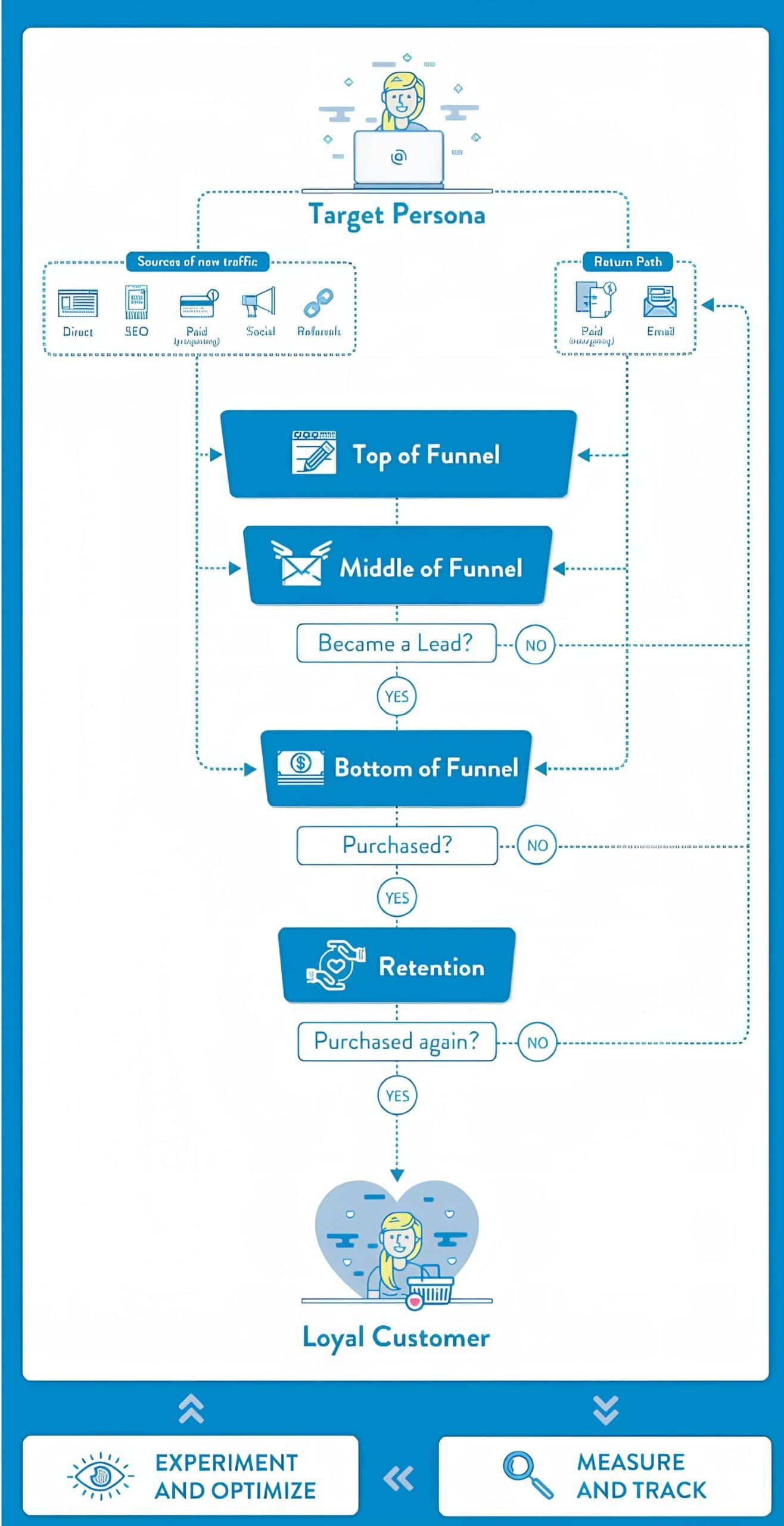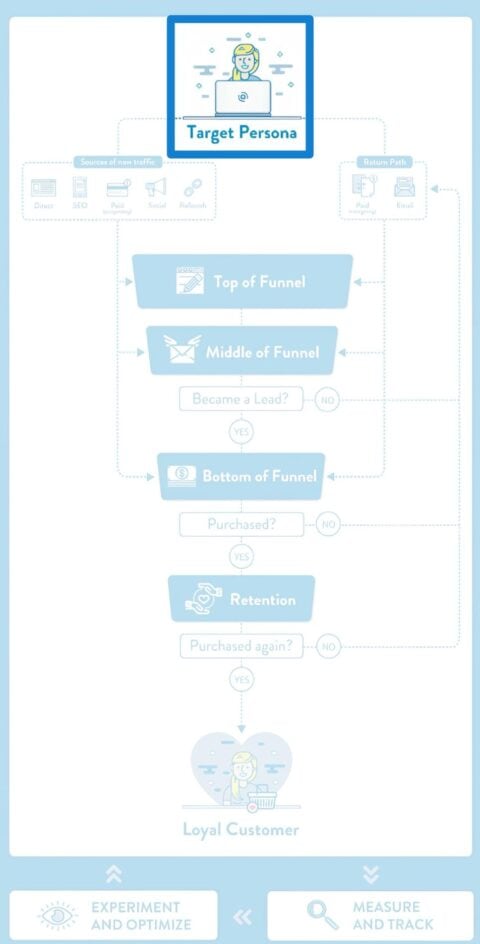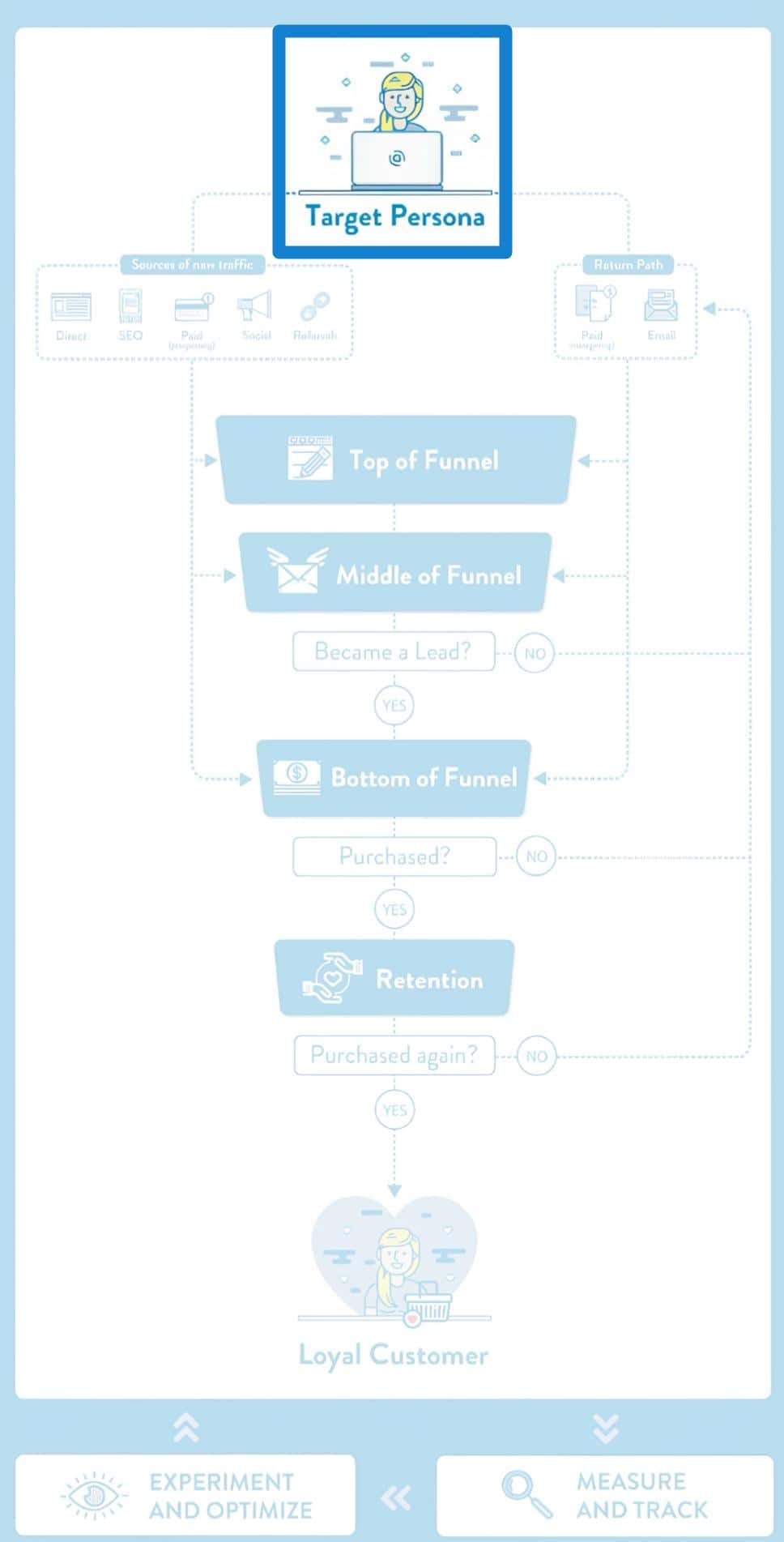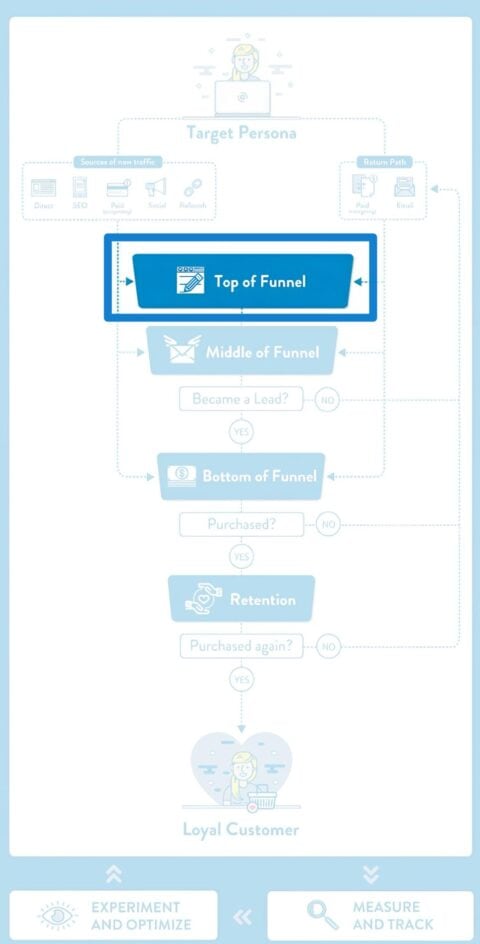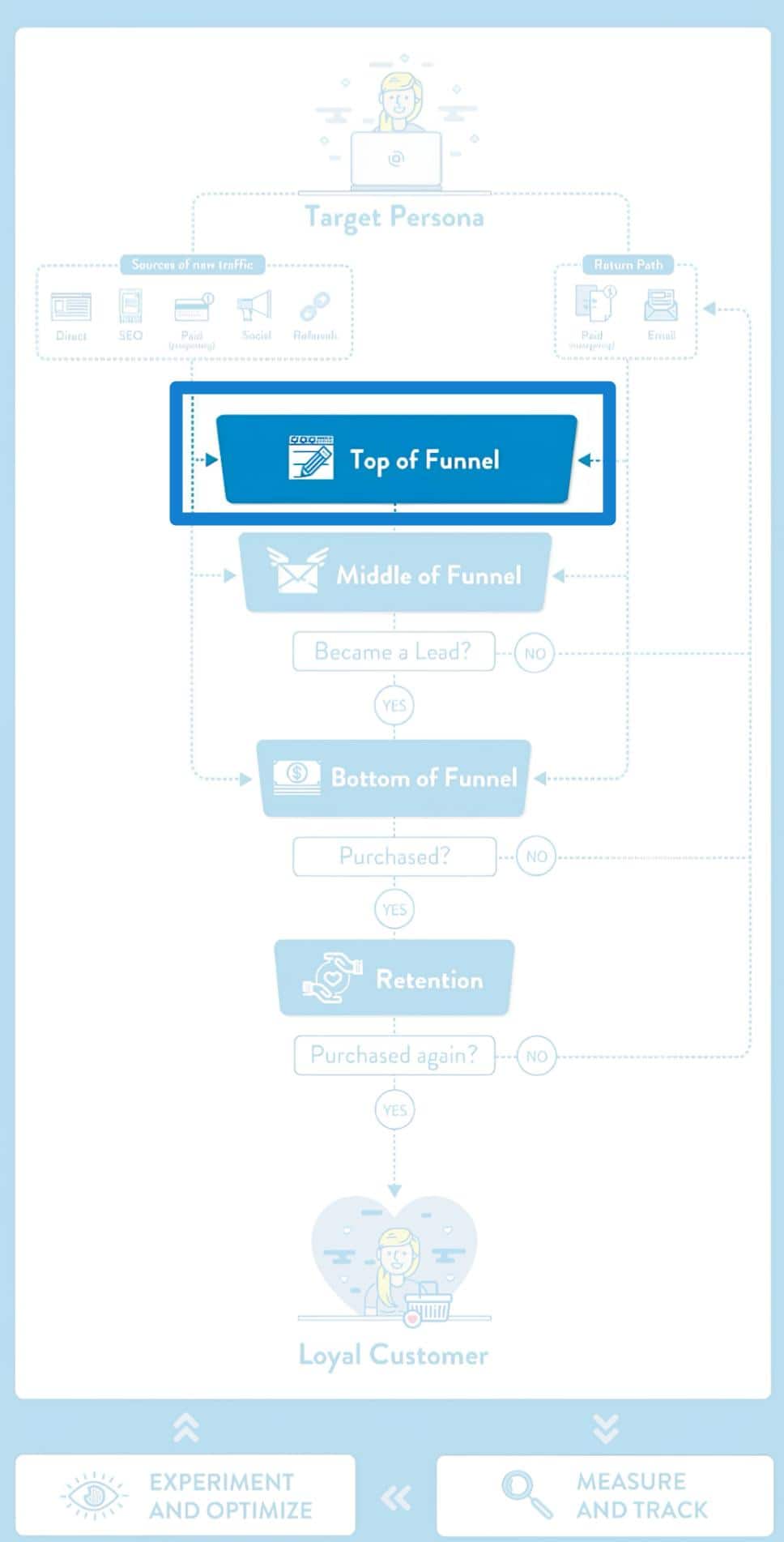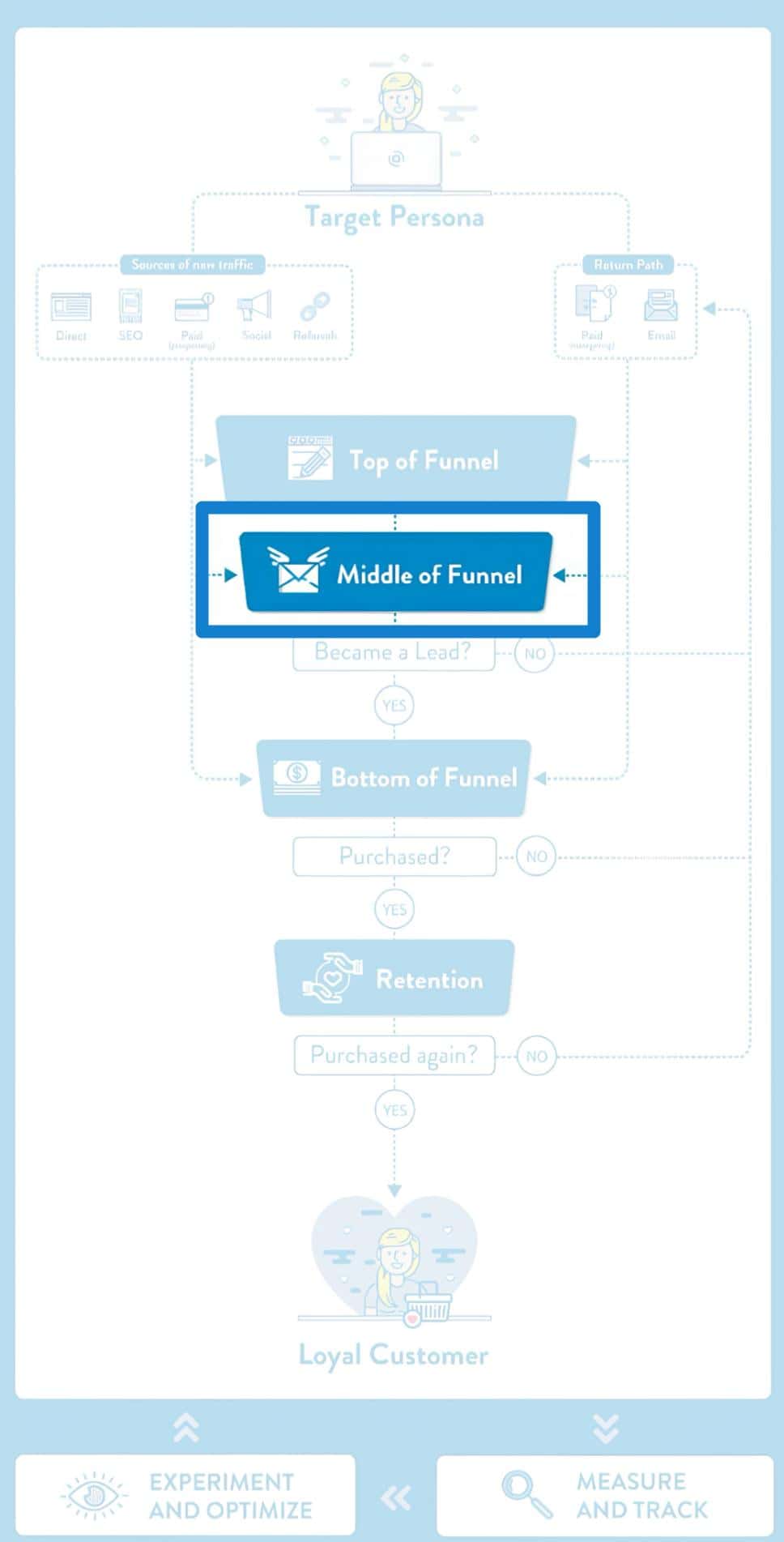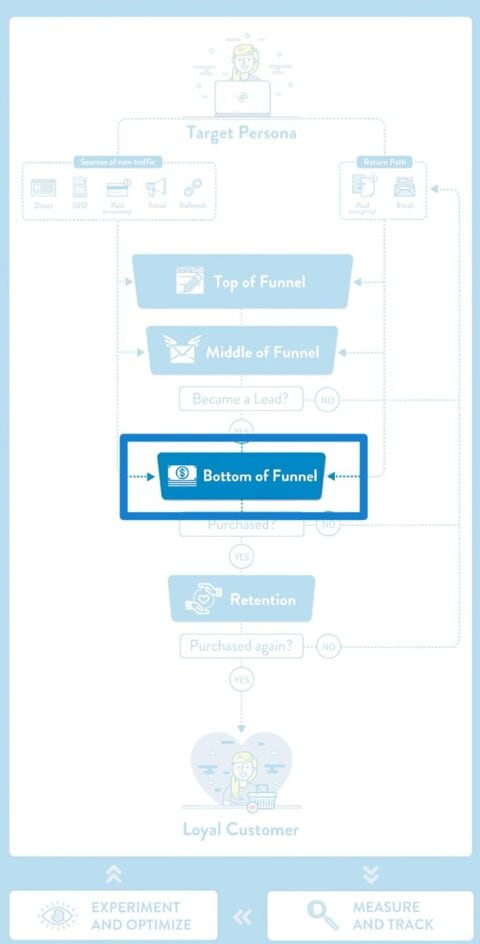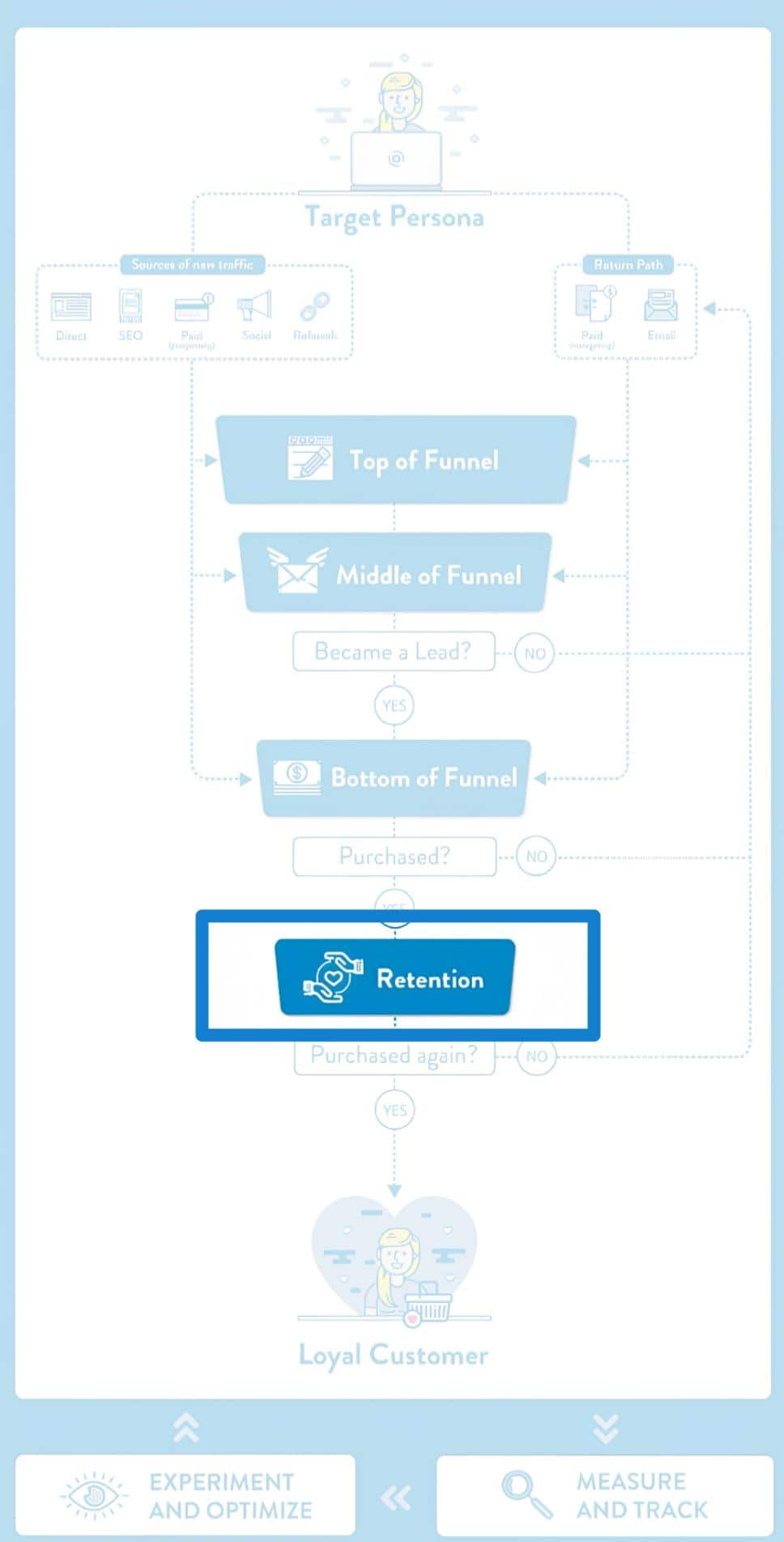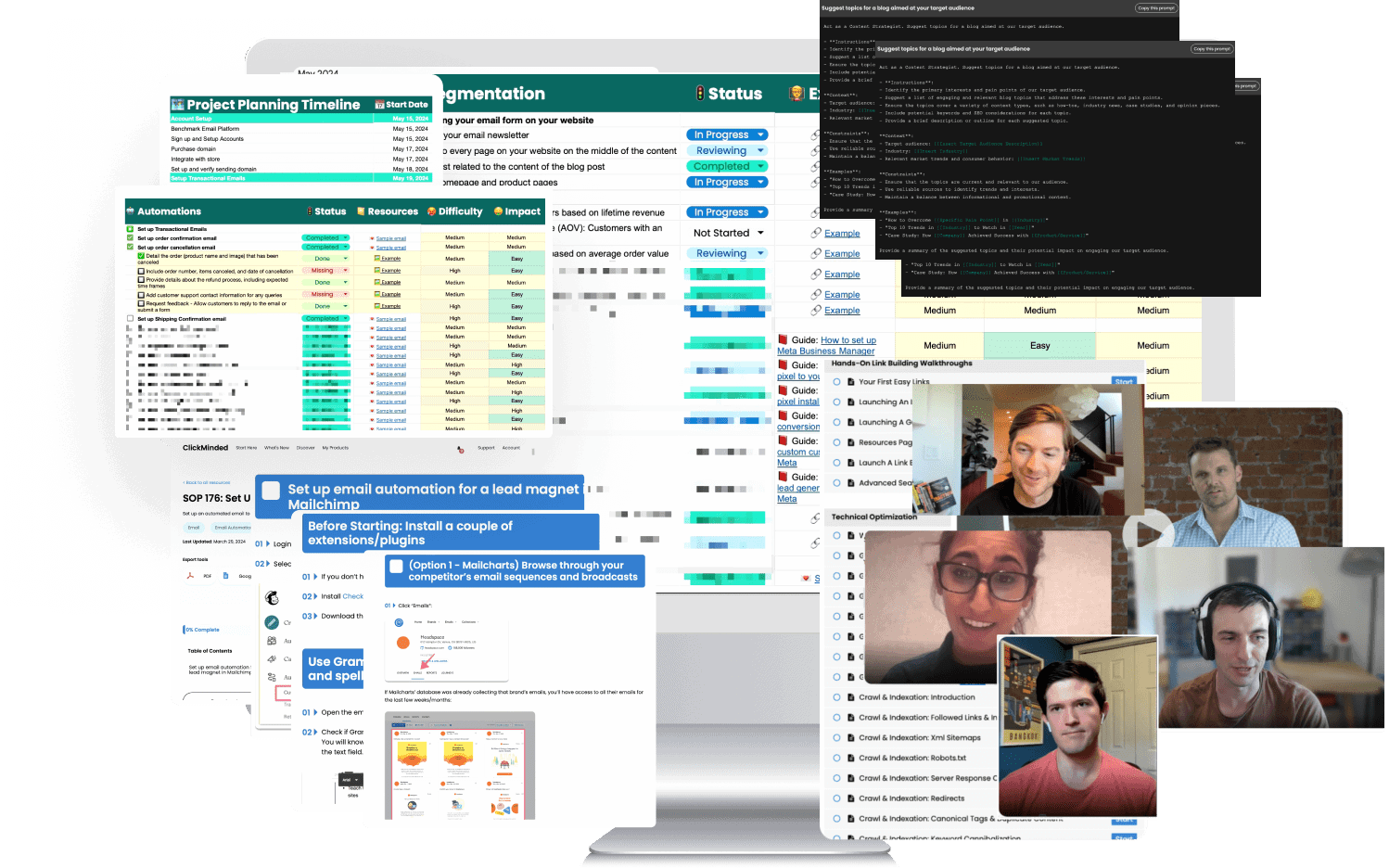📈
Your Goal at the Retention Stage: Increase Lifetime Value
In the retention stage, your marketing persona is already a customer of your product. Your objective is to increase the value you can extract from them directly by generating repeat purchases, upsells, or reducing churn; or indirectly by improving brand image or promoting referrals.
Customer lifetime value (CLV)
📝
Content Marketing
The objective of the content you'll create at the retention stage is to keep your existing customers happy by providing ongoing value (even after purchasing.)
Content ideas:
Monthly newsletter featuring new product highlights, tips for maximizing dropshipping success, and success stories from other entrepreneurs like Daring Debby
Video tutorial series: 'Advanced Dropshipping Techniques' focusing on upselling and cross-selling strategies
Interactive webinar: 'Maintaining Quality Supplier Relationships: Keys to Long-term Success' for both Daring Debby and Savvy Sam
Blog post: 'Leveraging Customer Feedback to Improve Your Dropshipping Business' encouraging customers to share their experiences
Loyalty program launch announcement: 'Introducing a Rewards Program for Our Loyal Customers!' emphasizing benefits and rewards
Customer satisfaction survey: 'Help Us Serve You Better - Share Your Experience with Our Products and Services'
What to measure:
Open rates of newsletters
Engagement rates on webinar content
Feedback received from customer surveys
🔎
SEO
At the bottom of the funnel, you'll want to make sure your marketing persona can find all the information she needs to get the most of your product (e.g. knowledge base articles), or to solve any problems that may arise (e.g. support/contact page.)
Keyword ideas:
Best practices for engaging with dropshipping customers post-purchase
How to foster long-term relationships in e-commerce
Strategies for encouraging customer reviews and referrals
Steps to optimize your dropshipping business for repeat sales
Understanding customer behavior in online shopping
Importance of customer feedback in improving products
Tips for resolving common customer complaints
Guidelines for creating effective loyalty programs
Leveraging social proof in dropshipping marketing
Defining customer success in dropshipping
What to measure:
Organic traffic to content related to customer retention
Keyword rankings for retention-focused queries
Backlinks acquired from customer satisfaction pages
🎯
Paid Advertising
At this stage of the funnel, you might choose to be run campaigns promoting of new features, upgrades, or promotions.
Target audience ideas:
[Remarketing] Facebook Ads: Target customers who made a purchase but have not returned in the last 30 days with ads showcasing new products or discounts
[Remarketing] Google Ads: Advertise to previous customers with the latest deals or loyalty program benefits directly related to their purchase history
[Remarketing] YouTube Ads: Highlight customer testimonials and success stories from users similar to Daring Debby and Savvy Sam
[Prospecting] Facebook Ads: Target audiences interested in e-commerce success and customer loyalty tips to attract new customers to the retention program
[Remarketing] Instagram Ads: Showcase user-generated content featuring satisfied customers using the platform's dropshipping products
What to measure:
Repeat customer conversion rate
Click-through rate on retention-focused ads
Return on ad spend (ROAS) from remarketing campaigns
📱
Social Media
Retention campaigns on social media revolve around building a sense of community with your existing customers. You'll do a lot of monitoring of brand mentions on social media.
Social media campaign ideas:
Regularly update Instagram Stories with customer testimonials and success cases highlighting the experience of Daring Debby and Savvy Sam
Create a Facebook group for existing customers to share their stories, challenges, and results, fostering community engagement
Host a monthly live Q&A session on relevant topics regarding dropshipping strategies and customer experience improvements
Monitor social media channels for brand mentions and respond promptly to feedback or inquiries to enhance customer relations
Share behind-the-scenes posts about changes made based on customer feedback, reinforcing a culture of listening and improvement
What to measure:
Engagement rates on testimonials posts
Growth rate of customer community interactions
Volume of customer feedback received through social media channels
📧
Email Marketing
Retention email campaigns will be a mix of educational emails (onboarding, activation, etc), transactional emails (reports, receipts, reminders, etc), and promotional emails (upgrades, upsells, etc.)
Email marketing campaign ideas:
Post-purchase follow-up emails requesting feedback and encouraging customers to leave reviews about their products
Exclusive offers and discounts for repeat customers promoted through an email campaign tailored to past buyers
Monthly performance report emails sharing insights on trending products and best-selling items among loyal customers
Birthday or anniversary emails offering special discounts to celebrate individual milestones of customers
Nurture email series providing tips and resources for enhancing dropshipping success value, adapting materials for ongoing support
What to measure:
Open rates on follow-up emails
Conversion rates from exclusive offers sent to returning customers
Response rate from customer feedback requests
🧪
Marketing Experiments
Your retention experiments will have the objective of maximizing lifetime value of existing customers.
Experiment ideas:
A/B test different email subject lines for follow-ups to see which generates more customer responses
Experiment with varying formats of customer satisfaction surveys to identify which yields higher completion rates
Test different layouts and incentives for the loyalty program landing page to see which maximizes sign-ups
Run split tests for different types of post-purchase nurtures to determine the most effective way to engage returning customers
Assess the impact of timing for email sends around customer anniversaries or significant dates on engagement and repeat purchase rates
What to measure:
Response rates on A/B tested emails
Sign-up rates for loyalty programs compared to previous designs
Conversion rates on nurtured offerings post-purchase


